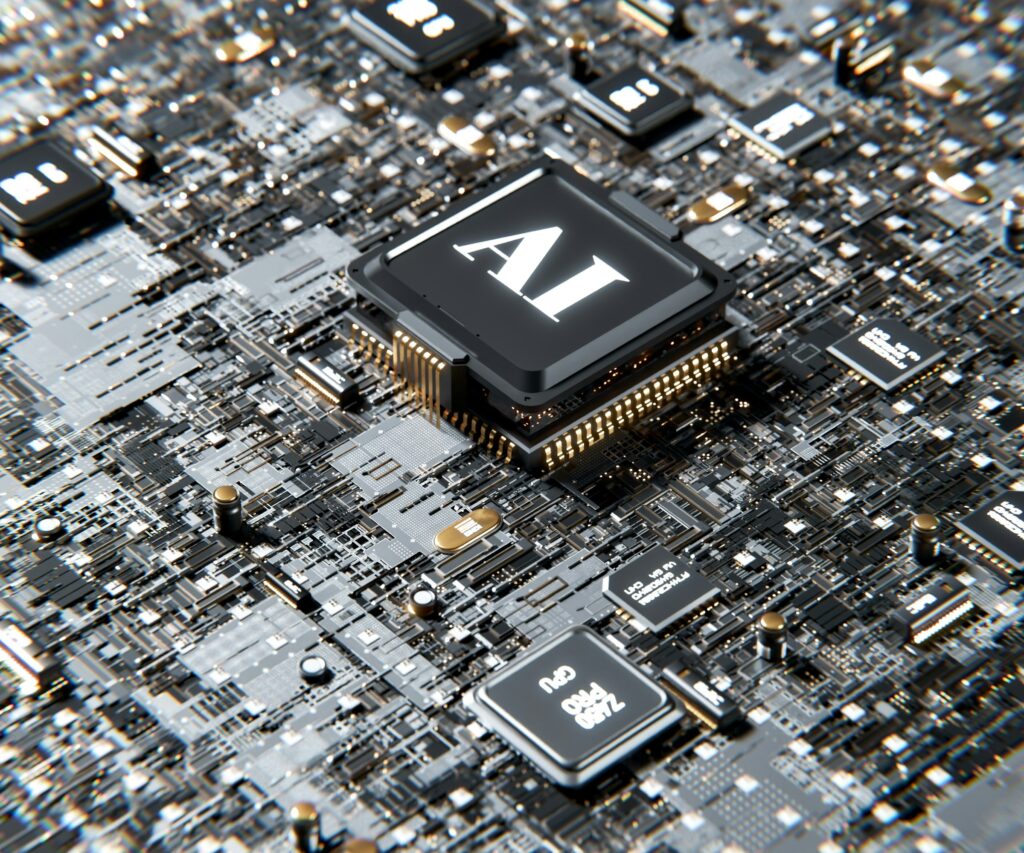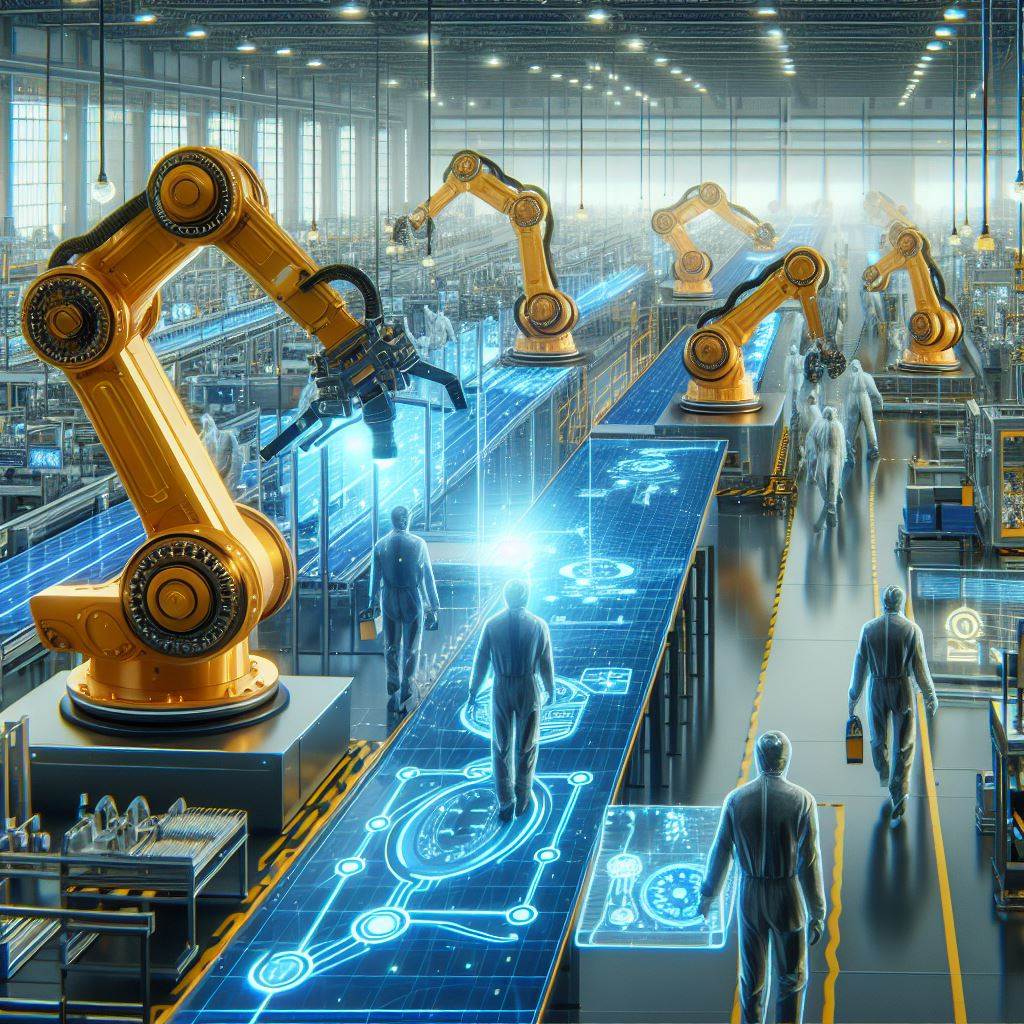
Artificial intelligence (AI) is rapidly transforming our world, with applications infiltrating every corner of industry. From medical diagnosis and fraud detection to personalized recommendations and self-driving cars, AI is poised to disrupt and redefine how we work and live. But simply deploying an AI system isn’t enough. To truly unlock its potential, you need the right team with the right skills. This begs the question: how do you assess your workforce to ensure a successful AI implementation?
We know that organizations face significant challenges in developing the necessary skills to leverage AI effectively. This includes both technical skills, such as data science, machine learning, and software engineering, and soft skills including critical thinking, problem-solving, and collaboration. A thorough assessment of an organization’s AI capabilities allows decision-makers to gain insights into AI readiness and identify areas needing development. This process often involves evaluating the workforce’s AI knowledge, the availability of data and resources, and the organization’s innovation culture.
Additionally, an AI skills assessment can uncover potential gaps or bottlenecks that might impede a successful AI implementation, such as a lack of specialized talent or inadequate infrastructure. Proactively addressing these challenges with targeted training, strategic hiring, and forming cross-functional AI teams can greatly enhance an organization’s readiness for AI, boosting the odds of a successful adoption and a strong return on investment.
Key Competencies Needed to Effectively Implement AI Solutions
Successful AI implementation requires a deep understanding of the organization’s strategic objectives and operational processes in addition to having the key competencies in place. This understanding ensures that AI initiatives align with the company’s overall goals and integrate smoothly into existing workflows, maximizing their impact and facilitating adoption. For successful AI implementation, fostering a shared vision and securing buy-in from all parties involved requires strong communication and collaboration across IT, business units, and stakeholders.
Building a strong foundation in these key competencies is essential:
• Technical Expertise: Data science, machine learning, software engineering, data engineering, cybersecurity
• Strategic Alignment: Business acumen, domain expertise, change management skills
• Cross-Functional Collaboration: Effective communication, teamwork, problem-solving
• Iterative Mindset: Continuous learning, adaptation, and improvement
Continuous monitoring, evaluation, and refinement of AI models are essential to maintain their accuracy, reliability, and relevance in dynamic business environments. An agile and iterative approach allows organizations to quickly adapt to changing market conditions and technological advancements. By fostering a combination of technical expertise, strategic alignment, cross-functional collaboration, and an iterative mindset, organizations can effectively harness the potential of AI solutions and gain a competitive edge in their industries. This approach inherently supports the ethical and responsible deployment of AI, guided by the governance frameworks established for the organization.
Conducting a Comprehensive Skills Assessment for AI Readiness
Building a strong foundation in AI skills is critical for successful implementation, yet organizations can fall short by solely relying on training programs. While these initiatives play a vital role in developing core competencies, true competitive advantage hinges on cultivating a workforce that can not only apply knowledge but also gain deep, practical experience. Conducting a comprehensive AI skills assessment helps bridge this gap by identifying existing skillsets and pinpointing areas needing development. This data-driven approach ensures training programs are targeted and effective, while also guiding the development of organizational learning initiatives that equip employees with the hands-on experience necessary to thrive in an AI-driven future.
To assess your organization’s AI readiness, consider the following key steps:
• Define AI Competency Frameworks: Identify the technical (e.g., programming languages, machine learning) and soft skills (e.g., adaptability, self-awareness, relationship management) needed for various roles. This establishes a baseline for evaluation.
• Skills Audits and Assessments: Utilize tools such as performance reviews, self-assessments, and in-take meetings to gauge the workforce’s current capabilities and identify skill gaps.
• Consider Specialized Partners: Partnering with AI skills assessment firms can streamline the process, offer tailored services, and provide unbiased insights.
• Develop Targeted Training: Based on the assessment results, create training programs (on-the-job, professional development) to address identified skill gaps. Focus on both technical expertise and soft skills for successful AI implementation.
• Continuous Learning: Regularly update skills assessments and training programs to reflect evolving technologies and business needs. This ensures your workforce stays current and drives ongoing success in AI initiatives.
By methodically assessing and developing the skills necessary for AI adoption, organizations can significantly enhance their capability to leverage the full potential of AI technologies. Partnering with specialized firms can further optimize this process, leading to more effective and efficient readiness for AI integration.
Upskilling the Workforce to Bridge the AI Skills Gap
To effectively bridge the AI skills gap, organizations must identify specific skill deficiencies within their workforce. This includes a comprehensive range of technical skills, such as advanced data analytics and AI system management, alongside crucial soft skills like ethical AI usage, empathy, and communication. By tailoring training programs to address identified needs, organizations equip employees with a comprehensive skillset that spans both core and advanced competencies. Programs should integrate emotional intelligence modules to enhance collaboration, leadership, and decision-making alongside the technical curriculum.
Incorporating specific AI certification courses that also emphasize soft skills can significantly boost employee confidence and credibility. These certifications validate acquired skills and demonstrate a commitment to comprehensive professional development. Continuous learning should be promoted throughout the organization, with regular updates to training programs and ongoing opportunities for emotional intelligence development. This approach not only keeps the workforce current with AI advancements but also fosters essential soft skills including empathy and adaptability, which are key for ethical decision-making in AI.
Reskilling employees to fill new AI-driven roles should focus on leveraging their extensive organizational knowledge while aligning their new skills with strategic goals. This focus ensures that technical training is complemented by strong emotional intelligence, enhancing job satisfaction and career development. Mentorship and knowledge-sharing programs can further accelerate this process.
Monitoring the effectiveness of these training programs is crucial. It should include assessments of how well technical skills and emotional intelligence are being integrated into the workplace. Feedback from these evaluations can help refine training efforts, ensuring they remain relevant and impactful.
By focusing on a combination of technical skills and emotional intelligence, organizations can better prepare their workforce for the challenges of AI integration. This approach not only maximizes the effectiveness of AI technologies but also cultivates a more collaborative, innovative, and adaptable organizational culture.
Aligning AI Skills for Strategic Impact
Developing a robust AI governance framework is the first step in ensuring responsible and effective AI integration. This framework defines the policies, procedures, and ethical guidelines that govern AI use, aligning it with the organization’s values and objectives. Establishing strong governance early sets the stage for success.
Next comes a comprehensive AI implementation strategy. This strategy outlines key AI goals, identifies primary use cases, and sets clear benchmarks for success. It serves as a roadmap, guiding the deployment of AI technologies in a way that is purposeful and aligned with broader business strategies.
With a governance framework and implementation strategy established, effective AI talent management becomes crucial. Organizations should focus on building a talent pipeline that supports their strategic AI goals. This includes attracting, developing, and retaining individuals with the necessary technical and soft skills through specialized recruitment, partnerships with educational institutions, and the creation of compelling career paths for professionals with AI and complementary skills.
An AI Center of Excellence (CoE) can be instrumental in aligning AI skills with objectives. The CoE standardizes AI practices, develops best practices, and provides leadership and support for AI projects. By centralizing expertise and resources, the AI CoE ensures consistent execution and deep integration of AI initiatives.
Finally, an AI skills roadmap, aligned with the implementation strategy and governance policies, is essential. This roadmap outlines timelines for training, upskilling, and potentially hiring new talent. It acts as a living document that evolves with the organization’s needs and includes metrics to measure the success of the skills development program. By continually evaluating the skills gap and adapting the roadmap, the workforce remains equipped to meet current and future challenges.
Ensuring AI Success through Strategic Skills Assessment and Development
The journey toward successful AI integration is multifaceted, requiring meticulous planning, strategic alignment, and continuous adaptation. By assessing the existing skills and capabilities within an organization, leaders can effectively prepare for the integration of AI technologies, ensuring that all employees are equipped to handle the new demands these systems introduce. This skills assessment, encompassing both technical and soft skills, is pivotal in identifying gaps that could potentially hinder the effective implementation and scaling of AI solutions. Addressing these gaps through targeted training and strategic hiring ensures a smooth transition to AI-enabled processes and fosters a culture of continuous learning and innovation.
Additionally, aligning AI skills with organizational objectives ensures that AI initiatives support strategic goals and enhance operational efficiencies. The establishment of a robust AI governance framework at the outset provides a strong ethical and procedural foundation, guiding all subsequent AI endeavors. An AI Center of Excellence can centralize expertise and leadership, ensuring that AI practices are standardized and effectively integrated across the organization. Additionally, an AI skills roadmap provides a structured plan for the development and integration of necessary skills over time, allowing for adjustments as technology and business needs evolve.
Ultimately, the effective implementation of AI is not just about the technology itself but also about the people behind it. By fostering an environment where technical proficiency is supported with strong emotional intelligence and ethical considerations, organizations can realize the potential of AI. This strategic approach not only enhances the immediate effectiveness of AI projects but also ensures long-term sustainability and success in an ever-evolving digital landscape.
In sum, the road to AI success is paved with thoughtful skills assessment, strategic alignment of skills with business objectives, and a commitment to ongoing development and governance. These elements combine to create a resilient, agile organization ready to capitalize on the opportunities AI presents. Ready to assess your organization’s AI readiness? Utilize our comprehensive AI readiness assessment tool to gain valuable insights into your organization’s current state and identify areas for development.

As industries accelerate their embrace of artificial intelligence (AI), many organizations find themselves grappling with unique challenges that hinder full-scale AI integration. These obstacles often stem from a complex relationship between technological readiness and human factors. Successful AI adoption requires managers to navigate these complexities by leveraging their emotional intelligence (EQ), understanding organizational culture, and managing internal politics. This blog post introduces a multi-frame approach to overcoming barriers to AI implementation, targeting managers who are at the forefront of these transformations.
The Current Landscape of AI Adoption
AI holds tremendous potential for enhancing business operations, decision-making processes, and overall organizational performance. However, the journey to successful AI integration is fraught with challenges. Managers often find that their effectiveness is deeply influenced by the organizational culture and internal politics within which they operate. According to Ernst & Young (EY), leaders equipped with EQ can significantly improve the chances of successful organizational change, particularly during transformations accelerated by AI (EY, 2021).
Importance of EQ and Organizational Dynamics
Managers can be both technically competent and emotionally intelligent but still encounter challenges that prevent them from realizing AI-related goals. Management development programs can improve EQ and help managers navigate challenging situations, but they cannot change the entrenched culture or politics within an organization. AI adoption requires a deliberate approach that involves understanding one’s strengths, weaknesses, and EQ levels, as well as the organization’s culture and political structure and history. Only with this understanding can managers effectively approach their development and AI governance, prevent bias, and foster a culture of psychological safety—all of which are crucial for successful AI adoption.
Defining Organizational Culture in the Context of Technology
Organizational culture comprises shared beliefs, values, customs, behaviors, and artifacts that shape how work is done. These shared values influence how individuals communicate and approach their work, determining the organization’s response to new challenges and opportunities. Cultures that value innovation and risk-taking tend to embrace AI projects with more enthusiasm, while those that prefer the status quo may resist (Schein, 2010).
Trust within the organization is also critical. High-trust environments enable experimentation and learning, essential for AI integration, as employees feel safe exploring new technologies without fear of reprisal. This sense of psychological safety allows employees to voice concerns, suggest improvements, and engage deeply with AI initiatives. Conversely, low-trust settings can stifle innovation and lead to reluctance in adopting AI (Edmondson, 2019).
How Cultural Values and Practices Influence AI Adoption
Cultural values and practices serve as the heart of every organizational culture, shaping attitudes towards new technologies including AI. Organizations that prioritize innovation create an environment where employees are encouraged to think creatively and experiment with new ideas. Adaptability is another critical value because it allows organizations to manage the rapid changes that come with AI implementation. Practices such as transparent communication and inclusive decision-making are vital for ensuring that AI initiatives are well-received across all levels of the organization. Recognition and reward systems that celebrate successes in AI projects can also reinforce positive behaviors and motivate employees to engage more deeply with AI initiatives (Kotter, 2012).
Organizational Politics and AI Implementation
Navigating power dynamics and political landscapes is another critical aspect of AI implementation. Organizational politics manifest through influence, relationships, and power dynamics among stakeholders, affecting project management aspects from lobbying for support to negotiating resources. Managers must skillfully navigate internal politics to secure support for AI initiatives, which may involve using their own political capital or enlisting others to advocate on their behalf. Effective management of these political and power dynamics is crucial for overcoming barriers and achieving successful AI integration (Pfeffer, 1992).
Leveraging Bolman and Deal’s Four Frames for Effective AI Integration
In their work “Reframing Organizations,” Bolman and Deal present a comprehensive framework for understanding organizational dynamics through four distinct lenses: Structural, Human Resources, Political, and Symbolic. Applying these frames to AI implementation offers valuable insights for managers:
1. Structural Frame: Focuses on the infrastructure and policies supporting AI implementation. Managers need to assess technological capabilities and identify necessary upgrades or changes (Bolman & Deal, 2017).
2. Human Resources Frame: Centers on the skills, attitudes, and well-being of employees interacting with new AI technologies. Empathy and social skills are crucial for understanding and addressing employee anxieties (Goleman, 1995).
3. Political Frame: Emphasizes the dynamics of power and politics within the organization. Managers must navigate stakeholder interests and manage resource allocation effectively (Pfeffer, 1992).
4. Symbolic Frame: Highlights the importance of culture, symbols, and communication in embedding AI into the organizational fabric. Inspirational leadership and effective use of stories and symbols can unite teams around the AI vision (Bolman & Deal, 2017).
Conclusion
The multi-frame approach offers a comprehensive strategy for managers to overcome obstacles to AI implementation. By understanding and addressing the cultural, political, and emotional intelligence dimensions of AI adoption, as well as having solid technical competencies, managers can significantly enhance their effectiveness in integrating AI technologies. This holistic approach not only ensures technological success but also promotes positive human impact, fostering a culture of innovation and continuous improvement.
If you’re ready to overcome the obstacles to AI implementation and lead your organization to success, we invite you to take the next step.
View the Strong AI Integration Framework: Gain a deeper understanding of how our multi-frame approach can help you navigate the complexities of AI adoption.
Contact Us for Coaching: Are you looking for personalized guidance to support your AI initiatives? Reach out to us today to learn more about our coaching programs designed to empower managers like you. Together, we can create a roadmap for successful AI integration that aligns with your organizational culture and strategic goals.
Email: tuesday@tuesdaystrong.com
Stay ahead of the curve and transform your organization with confidence. We look forward to partnering with you on this exciting journey!
References
• Bolman, L. G., & Deal, T. E. (2017). Reframing Organizations: Artistry, Choice, and Leadership. Jossey-Bass.
• Edmondson, A. C. (2019). The Fearless Organization: Creating Psychological Safety in the Workplace for Learning, Innovation, and Growth. Wiley.
• Ernst & Young. (2021). The Role of Emotional Intelligence in Business Transformations.
• Goleman, D. (1995). Emotional Intelligence: Why It Can Matter More Than IQ. Bantam Books.
• Kotter, J. P. (2012). Leading Change. Harvard Business Review Press.
• Pfeffer, J. (1992). Managing with Power: Politics and Influence in Organizations. Harvard Business School Press.
• Schein, E. H. (2010). Organizational Culture and Leadership. Jossey-Bass.
People, Process, and Data: Roadblocks and Solutions for AI Implementation in Manufacturing

Imagine a factory floor where robots seamlessly collaborate with human workers, machines predict and prevent breakdowns before they occur, and production lines autonomously optimize for maximum efficiency. This is the future that artificial intelligence (AI) promises to bring to the manufacturing industry [1, 4]. However, the path to this future is not without obstacles. Integrating AI into complex manufacturing environments requires navigating a series of challenges.
Hurdles to AI Adoption
One of the significant hurdles to AI adoption is a company’s digital maturity [1]. Organizations with limited digital infrastructure and a less skilled workforce face a steeper climb in implementing AI effectively. Investment in infrastructure upgrades and employee training are crucial for success [1].
Data quality and availability are another critical hurdle. AI systems rely on large volumes of clean, high-quality data to function effectively. Manufacturing environments often struggle with inconsistent data collection practices, making it difficult to ensure data quality meets the demands of AI applications [3].
Cultural resistance to change is another significant barrier. The introduction of AI can be met with skepticism and fear, particularly regarding job displacement [3]. Effective change management, clear communication, and employee education are essential to demonstrate how AI can augment human capabilities and create a more efficient and productive work environment [3].
Additionally, the complexity of AI systems and the need for specialized talent present further obstacles. Implementing AI often requires a workforce with skills in data science, engineering, and AI development, which can be scarce [5]. This talent gap can slow down AI adoption and increase reliance on external vendors, adding to the overall cost [5].
The customization required for AI applications in manufacturing is another significant challenge. Each manufacturing environment has unique needs and processes. Off-the-shelf AI solutions may not be effective, and customizing AI requires significant resources and expertise [4].
Finally, ensuring trust in AI systems is crucial for their successful implementation. Manufacturers need to understand how AI makes decisions to trust its recommendations and actions. Developing AI systems with transparency is essential for their acceptance and effective use in manufacturing environments [1].
Unleashing the Power of AI
Despite these challenges, the potential benefits of AI in manufacturing are undeniable. AI can automate repetitive tasks, improve quality control processes, optimize production scheduling, and drive predictive maintenance strategies [1, 3, 4]. This translates to significant gains in efficiency, reduced downtime, and improved overall equipment effectiveness (OEE).
Advanced AI applications can also analyze vast amounts of data to identify patterns and trends that humans might miss. This can lead to innovative product development, improved process optimization, and the creation of entirely new manufacturing paradigms [4].
As the industry continues to evolve, overcoming the challenges highlighted above will be key to unlocking the full potential of AI in manufacturing. By focusing on digital transformation, data quality initiatives, and a people-centric approach to change management, manufacturers can harness the power of AI to gain a significant competitive advantage.
Reference List
Claude.ai. (2024). https://claude.ai/chat/be9527c2-42bb-464f-a9a0-19fbcad54cb9
MIT Sloan Management Review. (2022, September 27). AI in manufacturing: Start with data, not complex AI systems. https://news.mit.edu/2023/ai-based-estimator-manufacturing-medicine-0503
PwC. (n.d.). Introduction to implementing AI in manufacturing. https://www.pwc.com/gx/en/industries/industrial-manufacturing/publications/introduction-implementing-ai-manufacturing.html
Valiot. (2023, September 12). Overcoming production challenges: Implementing artificial intelligence in manufacturing environments. https://valiot.io/blog/post/optimizing-production-line-efficiency-a-deep-dive-into-valiot-s-ai-driven-solutions?show=8
World Economic Forum. (2024, January 29). How we can unleash the power of AI in manufacturing. https://www.weforum.org/press/2022/12/ai-can-enable-a-new-era-in-manufacturing-sector-says-world-economic-forum-white-paper/
World Economic Forum. (2023, January 23). AI in the manufacturing sector: Barriers to adoption. https://www.weforum.org/agenda/2023/01/ai-manufacturing-sector-barriers-to-adoption/

